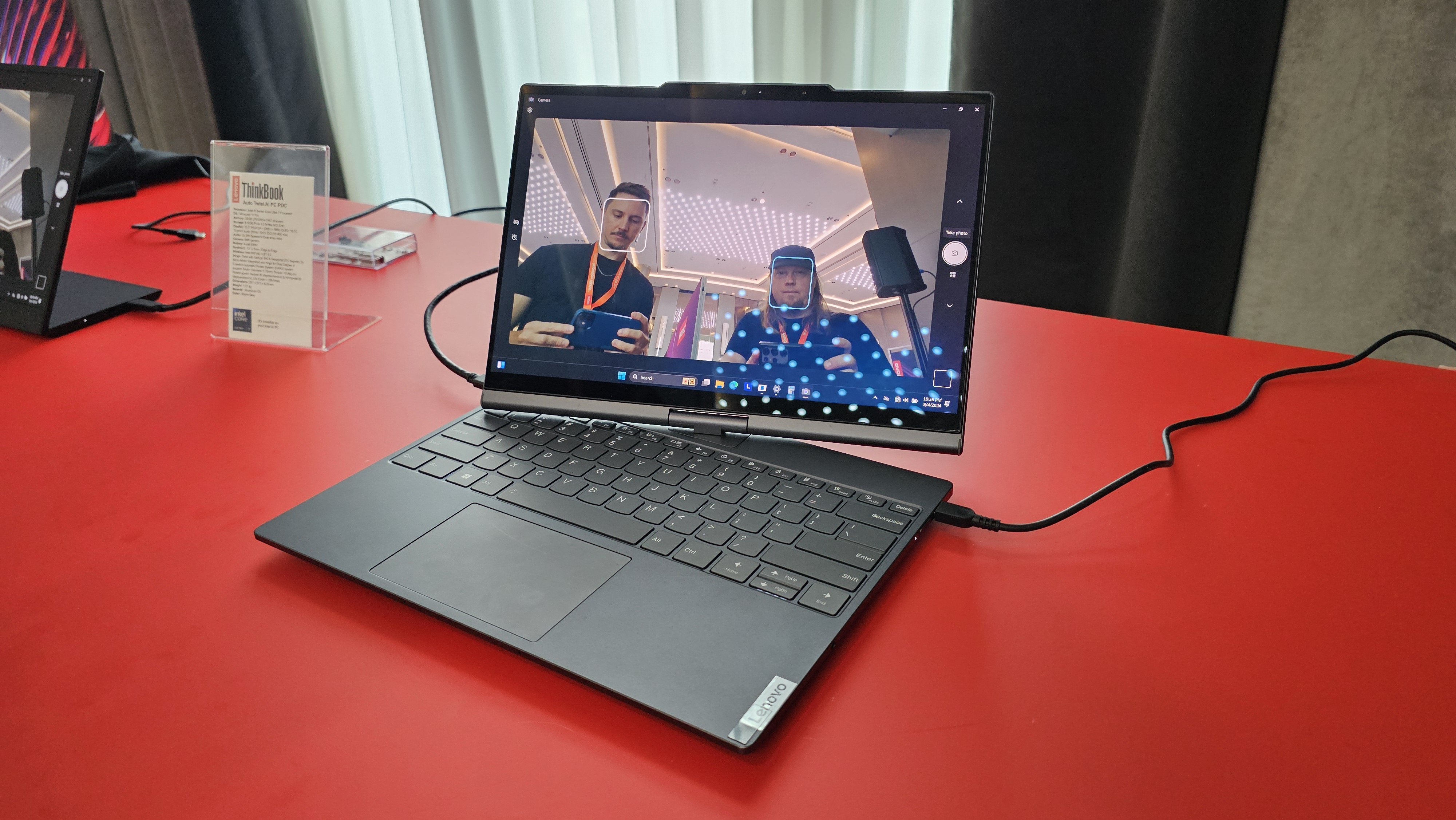Lenovo’s Auto Twist AI PC IFA concept has a motorized hinge that can follow you around and close itself via voice command
The Facebook Portal of portable PCs?

Lenovo’s been at the forefront of convertible laptop designs since its first Yoga laptop shipped in 2012. But here ahead of IFA in Berlin, its latest Auto Twist AI PC concept attempts to take things into sci-fi territory, with a motorized “Dual Degree of Freedom” hinge that can track your movements to make sure you always have “optimum display visibility.”
Of course, this means your webcam will also keep you in frame for meetings, presentations, or video calls with friends and family. That could be convenient for those who don’t like to sit or stand in one place for calls, and it’s certainly striking to see a laptop screen follow you around the room. But it’s also hard not to be reminded of 2018’s Facebook Portal, which similarly had a screen and camera that followed users around the room.
There is also no denying that the screen wobbles noticeably as it moves, despite a Lenovo representative telling me the company had done a lot of work to reduce it. Still, it’s impressive that the company was able to fit motors into the base of the screen without giving it a huge bump. There is a slight bulge on the bottom, but it’s barely noticeable — especially when the screen is moving on its own.
Of course, the Auto Twist AI PC concept is a full-blown laptop, and its motorized hinge can do a few other interesting things. At Lenovo’s event, saw the laptop responding to voice commands, like “tablet mode,” “laptop mode,” and “close laptop.” At one point, the screen did get stuck trying to convert to tablet mode, with the lid seeming to get stuck up against the keys. But after a quick reorientation and re-launching of the software, I didn’t see any other issues in terms of movement. The lid is designed to automatically close itself when you step away from the laptop.
Hopefully that last bit will be adjustable in terms of time and sensitivity. No one wants their laptop to close when they turn away for a few seconds to talk to a colleague. And if you’re working from home, you probably don’t want to have to open your laptop back up every time you get up to get a drink or a snack.
If you’re the slouching type, the Twist AI PC is also ready to nag you about it. Lenovo says the laptop has “wellness enhancements” designed to promote ergonomic computing and reduce strain. Honestly, most of us could use some help there. But I’m not sure I want my laptop automatically reminding me how tired I am by adjusting the screen angle when I’m hunched over at the end of the day (fine, also sometimes at the beginning of the day), or sending me notifications to sit up straight because the camera can tell that I’m slouching.
This is, of course, a concept laptop. So you probably don’t need to worry about your next company-issued ThinkBook sending TPS reports to your corporate overlords about your bad posture or how many times you paced across the meeting room during your last presentation about quarterly financials.
But some of these features may eventually filter down to buyable devices. I don’t hate the idea of a laptop that can open and close on its own – so long as the motors and mechanism are robust enough that I don’t have to worry about them breaking. The Auto Twist AI PC did look a bit fragile, but it’s still a concept. I’m sure if Lenovo ever releases a device like this with a motorized hinge, it will iron a few more kinks out before its launch date.
Get Tom's Hardware's best news and in-depth reviews, straight to your inbox.
After a rough start with the Mattel Aquarius as a child, Matt built his first PC in the late 1990s and ventured into mild PC modding in the early 2000s. He’s spent the last 15 years covering emerging technology for Smithsonian, Popular Science, and Consumer Reports, while testing components and PCs for Computer Shopper, PCMag and Digital Trends.
-
Notton That's a cool party trick, but I don't see it going beyond a concept.Reply
IMO, it would work better if the camera was the only thing attached to the gimbal.
Like make the camera not part of the screen so that a larger sensor can be used. It should retract when it's not being used so you know the camera isn't looking at you.



